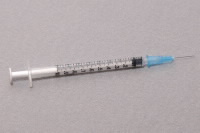FOR IMMEDIATE RELEASE
ACS News Service Weekly PressPac: December 09, 2009
New clues emerge for understanding morphine addiction
“The Proteomic Analysis of Primary Cortical Astrocyte Cell Culture after Morphine Administration”
Journal of Proteome Research
Scientists are adding additional brush strokes to the revolutionary new image now emerging for star-shaped cells called astrocytes in the brain and spinal cord. Their report, which suggests a key role for astrocytes in morphine’s ability to relieve pain and cause addiction, appears online in ACS’ Journal of Proteome Research, a monthly publication: “The Proteomic Analysis of Primary Cortical Astrocyte Cell Culture after Morphine Administration.”
In the study, Piotr Suder and colleagues point out that nearly everyone viewed astrocytes — the most abundant cells in the brain — as supporting actors in the drama of brain activity. Scientists thought astrocytes simply propped up neurons, nerve cells that transmit signals, and kept them in proper position. Studies during the last several years, however, suggest that these cells are just as their Greek name suggests — stars.
The scientists exposed added morphine to a group of astrocytes in cell culture for several days. They found that the morphine-exposed cells showed increased levels of nine proteins that appear to play a role in maintaining the normal function of nerve cells. “These proteins, after additional detailed study of their function, may serve as a potential marker of drug addiction, or may be the targets for potential therapy,” the article notes.
![]()
Contact
Science Inquiries: Michael Woods, Editor, 202-872-6293
General Inquiries: Michael Bernstein, 202-872-6042

to understanding morphine
addiction.
Credit: U.S. Drug Enforcement
Administration
(High-resolution version)

